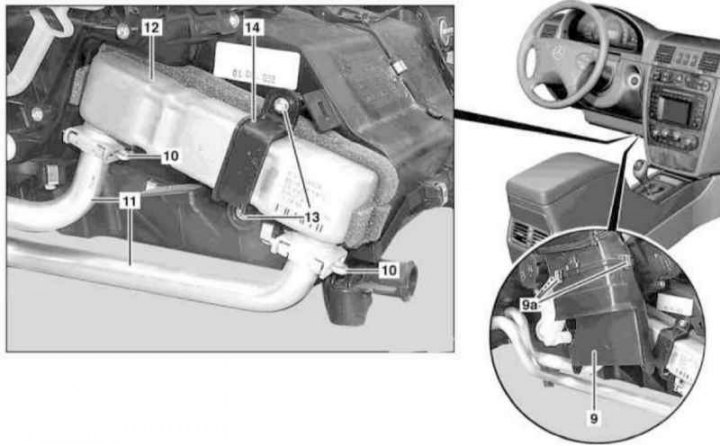
Heat exchanger installation details
9 - Nozzle; 9a - Spring clips; 10 - Connecting clamps; 11 - Tubes of the cooling path; 12 - Heat exchanger; 13 - Bolts with TORX heads; 14 - Clamp
1. After depressurizing the tract, empty the cooling system (see chapter Ongoing care and maintenance).
2. Appropriate models (code ET2) activate the service mode of the TELE AID emergency call system (see Section Activation / deactivation of the service mode of the TELE AID emergency call system).
3. Disconnect the negative cable from the battery - there is no need to connect an auxiliary battery.
4. Remove the instrument panel (see chapter Body).
5. Remove the gas pedal.
6. Remove the floor carpet in the left rear footwell (see chapter Body).
7. Remove the cover from the left side of the front center tunnel.
8. Remove the left rear footwell air supply hose.
9. Release the spring clips (9a) and remove the nozzle (9).
10. Remove the connecting straps (10) and disconnect from the heat exchanger (12) cooling tubes (11), clamps (10) and sealing rings must be replaced without fail.
11. Turn out bolts (13).
12. Remove the clamp (14) and remove the heat exchanger (12).
13. Thoroughly clean the inside of the heat exchanger casing, completely removing traces of coolant leaks from it, which are a source of unpleasant odors.
14. Installation is carried out in the reverse order.
15. Deactivate the service mode of the TELE AID system on models of the corresponding configuration.
16. In conclusion, clear the memory of the processor of the on-board self-diagnosis system (see chapter Engine Electrical Systems).
